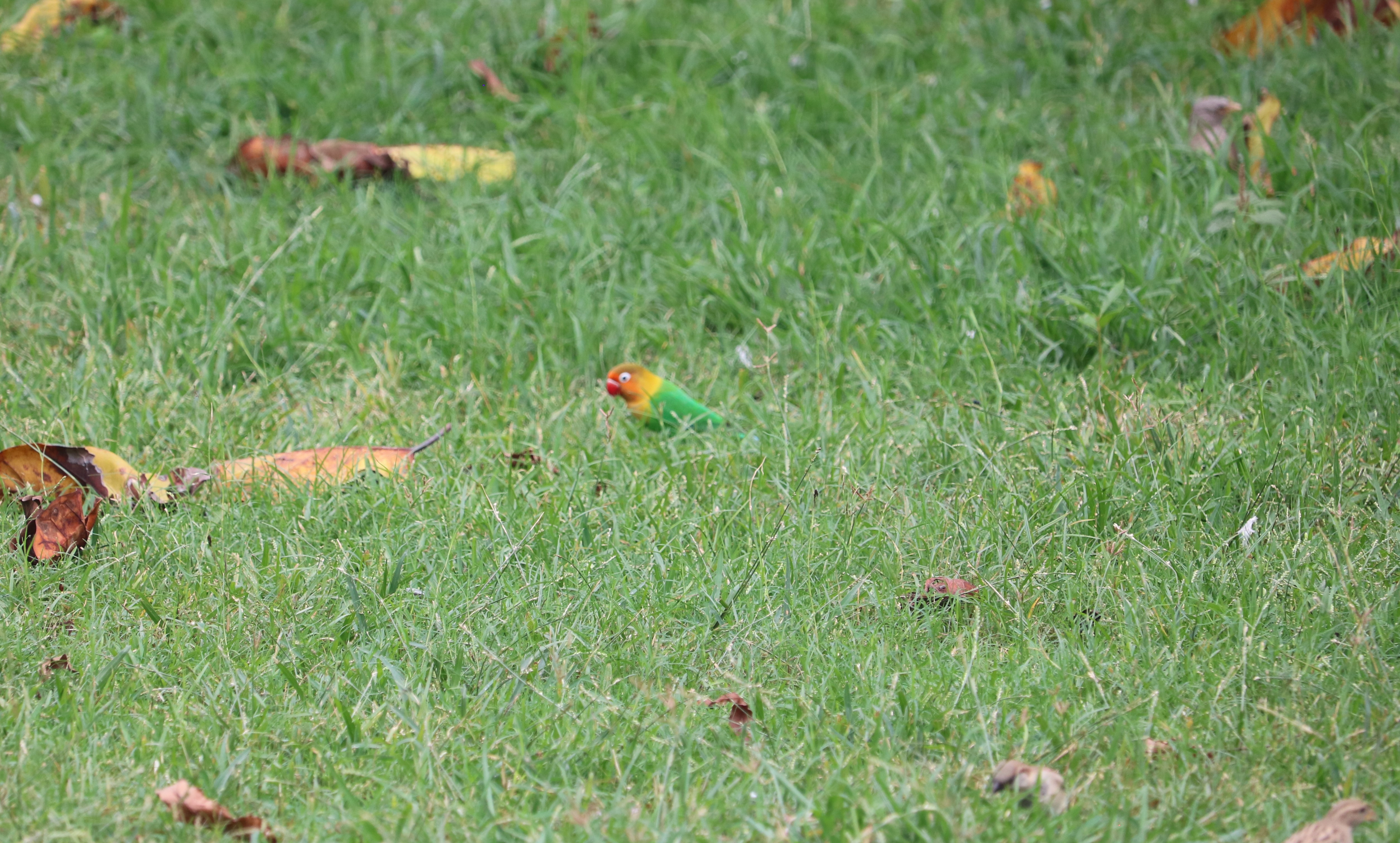Love bird
Species
Families
Local Names
Genus
Native/Introduced
DNA Barcode
Description
Fischer’s Love bird
Fischer's lovebird (Agapornis fischeri) is a small parrot species of the genus Agapornis. They were originally discovered in the late 19th century. They are named after German explorer Gustav Fischer. Fischer's lovebird are native to a small area of east-central Africa, south and southeast of Lake Victoria in northern Tanzania. In drought years, some birds move west into Rwanda and Burundi seeking moister conditions. They live at elevations of 1,100-2,200m (3,600-7,200 ft) in small flocks. They live in isolated clumps of trees with grass plains between them. The population is estimated to be between 290,000 and 1,000,000, with low densities outside of protected areas due to capture for the pet trade; export licenses were suspended in 1992 to halt any further decline in the species. Although they have been observed in the wild in Puerto Rico and Florida, they are probably the result of escaped pets, and no reproduction has been recorded. Around 100 mating pairs can be found in the wild between Porches and Armacao de Pera and Lagoa area in the Algarve region of Portugal. They have also been observed in the U.S. Virgin Islands.
Behaviour
After a bath, they like to sun themselves. Fischer's lovebird has a fast flight, and the sound of their wings as they fly can be heard. Like all Lovebirds, they are very vocal and when they do make noise they have a high-pitched chirp and can be very noisy.
Food and feeding
Fischer's lovebirds eat a wide variety of foods, including seeds and fruit. They sometimes are pests to farmers, as they eat their crops such as maize and millet. Lovebirds are very active and love to chew things. Fischer's lovebirds are difficult birds to keep healthy in captivity. They are active birds that need a lot of room. When confined to a cage their health tends to suffer.
Personality
Lovebirds are seen as charming and affectionate by their owners. Though they're not as cuddly as many parrots, they enjoy spending time with their owners, and require regular interaction.
As with many parrots, lovebirds are intelligent and inquisitive birds. In captivity, they like to investigate around the house, and have been known to figure out ways to escape from their cages, and to find hiding places where they may get stuck, and where it may be difficult to locate them. Lovebirds are avid chewers, with strong beaks. They can enjoy "preening" the hair and clothing of their owners, and chewing on clothing, buttons, watches, and jewelry. Lovebirds are very active. Female lovebirds are supposedly more aggressive than the males but both can make fine pets with patience and correct training. Lovebirds (in general) are not known for their talking ability, although there are some lovebirds that do learn words - the females are usually the ones that do this. As is the case when many smaller parrots, the "voice" of lovebirds is high-pitched and raspy and it may be difficult to understand their speech. Lovebirds are very vocal birds, making loud, high-pitched noises that can be a nuisance to neighbors. They make noise all day, but especially at certain times of day. However, Fischer's are not quite as loud as some other lovebird varieties, and while they cheep frequently, they do not scream like the larger parrots. Their noise level increases substantially when they are engaged in pre-mating rituals.









































































































































